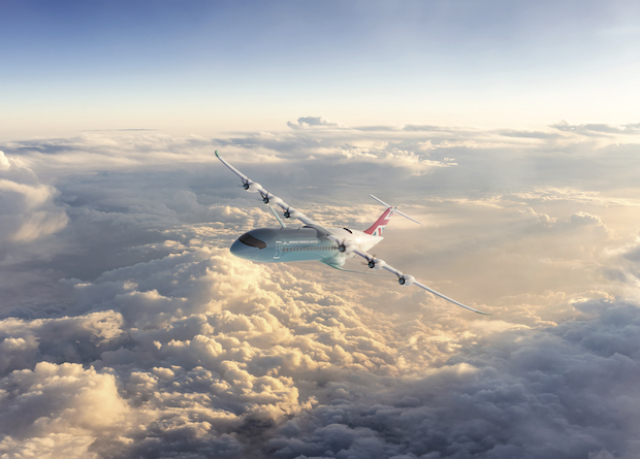The project of the British Institute of Aerospace Technologies FlyZero presented the initial concept of a regional hydrogen aircraft. As reported by FlightGlobal, the liner is designed to transport up to 75 people over distances of up to 1.48 thousand kilometers.
Hydrogen-powered aircraft are considered environmentally neutral. The electric motors that drive them are powered by a fuel cell, connecting hydrogen with oxygen on the go. Only water is formed as an "exhaust". In addition, hydrogen can give a much higher energy density than many modern batteries. But the development of hydrogen aircraft is associated with a number of difficulties. For example, they need a lot of liquid fuel for long-range flights. If it is placed inside the fuselage, the number of seats will be reduced. And if on an external suspension, the take-off weight and drag of the aircraft will increase.
The British Institute of Aerospace Technology has been leading the FlyZero project since 2020 with the support of the Government of the United Kingdom. Its task is to explore the concepts of zero-emission aircraft and present the concepts of three eco-friendly aircraft: regional, wide-body and wide-body. Last December, FlyZero published a concept image and some details about the wide-body liner. It will have to carry 279 passengers over distances of more than 9.7 thousand kilometers.
In January, FlyZero presented the initial concept of a regional eco-friendly aircraft designed for 75 passengers. The dimensions of the aircraft are not specified. But it is known that liquid hydrogen will be stored in cryogenic fuel tanks in the tail of the fuselage. The fuel cells will power six electric motors located in the nacelles.
The flight range of the regional hydrogen aircraft will be 1.48 thousand kilometers, and the cruising speed will be 600 kilometers per hour. The final concept of the FlyZero aircraft is going to be published in March.
Today, hydrogen passenger aircraft are being developed by other companies. For example, the British Electric Aviation Group is creating a 90-seat hydrogen airliner, the British-American ZeroAvia is a 76-seater, and German H2Fly and Deutsche Aircraft are 40-seater.
Vasilisa Chernyavtseva

